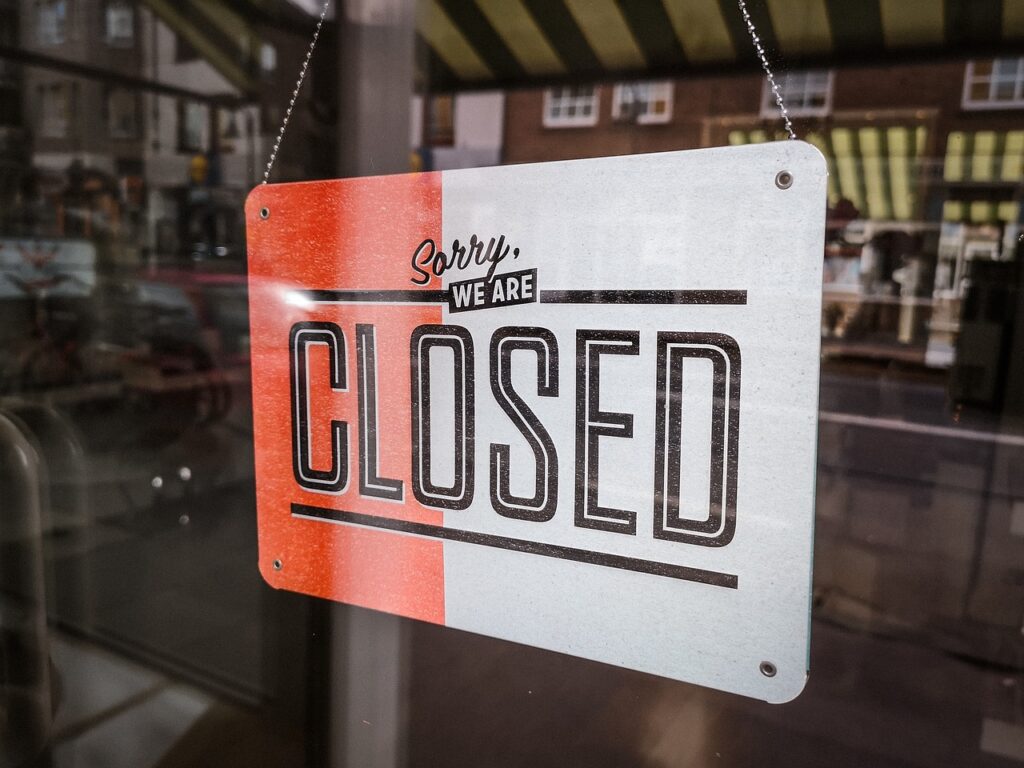Why The Best Sit-Down Restaurants Are Disappearing At Record Rates
The pandemic caused the dine-in sector of the restaurant industry to shrink substantially, and experts predict that it will be years until the sector fully recovers.
This article is more than 2 years old

The restaurant industry suffered tremendously during the pandemic, as people nearly stopped going to restaurants altogether, and food costs soared. But even as conditions have returned to a state of somewhat normalcy and restaurants have reopened their dining rooms, the restaurant industry still has not rebounded to where it was pre-pandemic. According to CNN Business, there are approximately 72,000 fewer restaurants in the U.S. today than there were in 2019, and experts don’t expect that number to change any time soon; many believe even more restaurants will shutter because of current food prices and inflation.
Technomic, a restaurant research firm, predicts that the restaurant industry will take years to fully recover, and it will likely be 2026 or later before the number of restaurants gets even close to where it was pre-COVID. The restaurants with the most disadvantages right now are sit-down and fine dining establishments; they struggled during the pandemic as takeout, and fast food restaurants became the go-to, but they’re struggling now in a culture that still prefers eating at home, and people that don’t have money to spend at nice restaurants. For many consumers, even when they do choose to go out to eat, they’ll choose a more budget-friendly option over a better overall food experience.
Even hardened restaurateurs have struggled to stay afloat the last few years, with many seasoned, reputable business owners closing their doors. To the hopeful restaurant owner, most would say to find a new dream; the industry is just too difficult to break into right now. Those restaurants that were able to adapt quickly to the pandemic, offering takeout, delivery, and quality out-of-restaurant dining experiences, were more likely to succeed, but many were unable to keep up with the rapidly changing conditions and needs of their customers.
Today, restaurants face a variety of challenges, from inflated food costs to a persistent increase in takeout orders. Many restaurants are having to raise menu prices to profit after higher food costs, but these raised prices also make customers less likely to visit the restaurant, as many search out cheaper food options or simply cook at home. Takeout orders—while they are the lifeblood of many restaurants—are also sometimes difficult to control in terms of quality after travel and preparation time.
Staffing is also a huge issue in the restaurant industry right now, as many employees left during the pandemic—amid dismal treatment and horrid customers—and never returned. Some believe that there needs to be an overhaul in the restaurant industry in terms of how employees are compensated and cared for by their business owners, but many larger chains are actively working against attempts to level the playing field for restaurant employees. A number of chain restaurants are actively funding opposition to bills like one in California, which could change the minimum wage to $22 an hour and create state-wide working condition requirements for fast food employees.
The challenges the restaurant industry faces won’t disappear in a matter of months, or even years, but just as they did during the pandemic, they’ll rise to the occasion. It’s hard to say what the restaurant scene will look like in your city from one year to the next. If you want to make sure that your favorite local spot doesn’t go under, make sure you visit often—and tip well!





